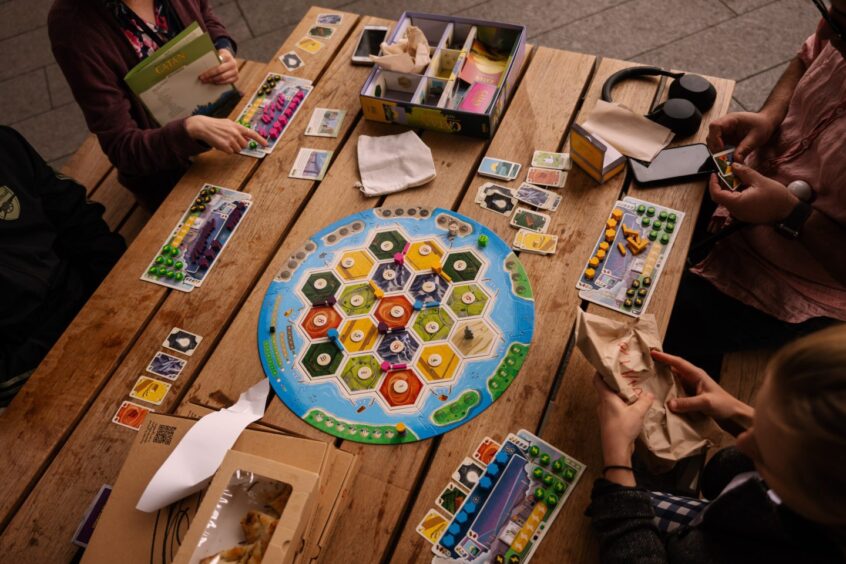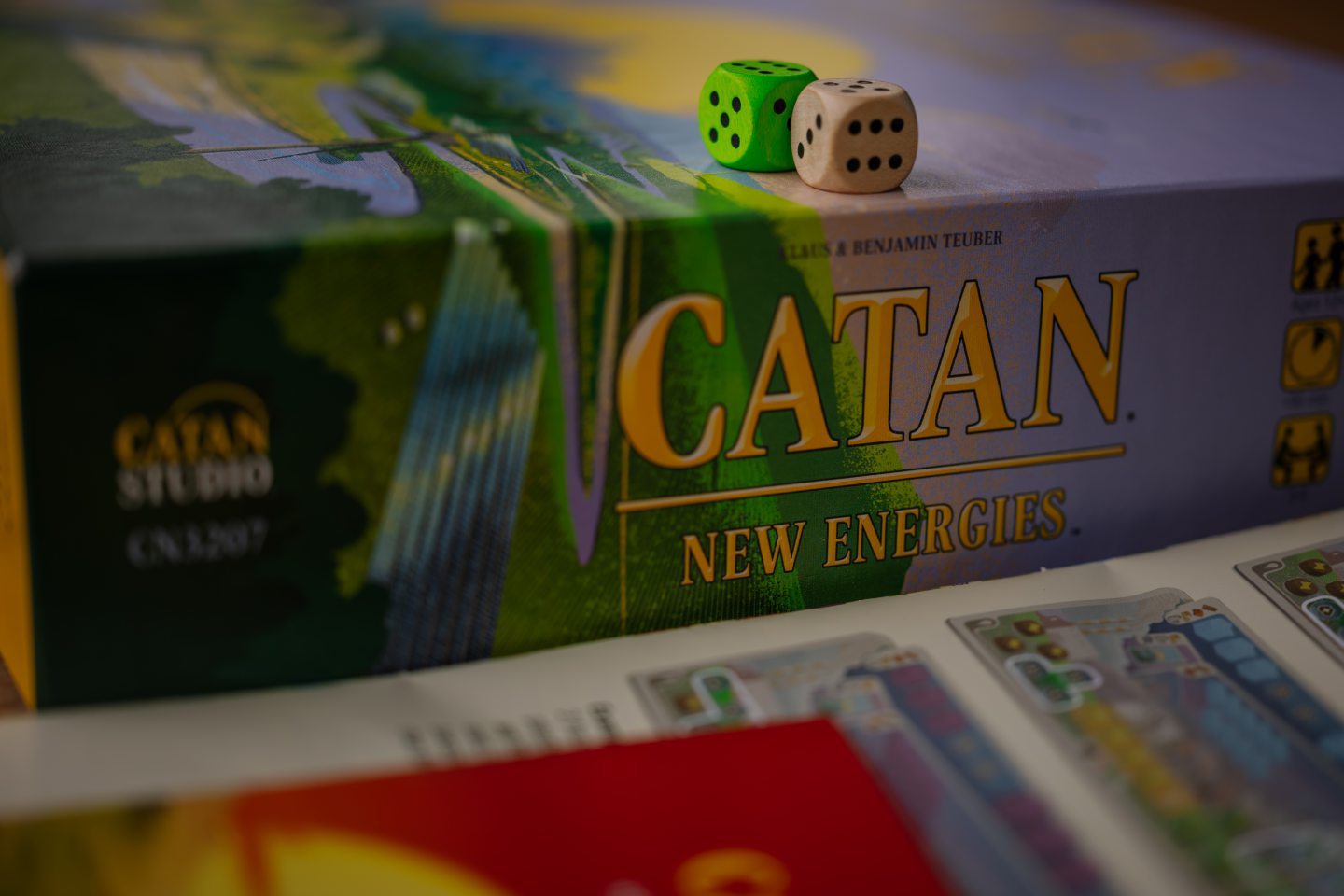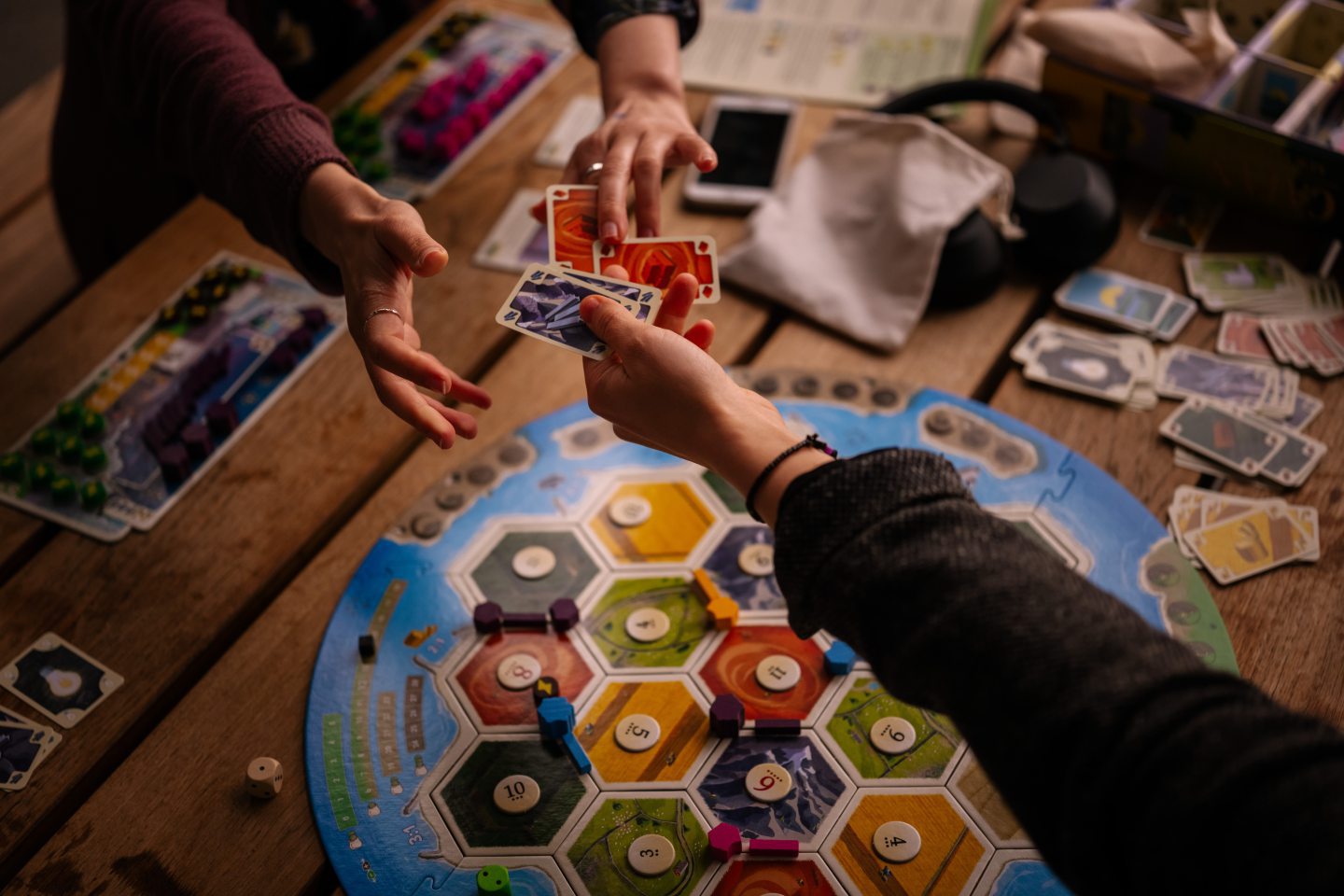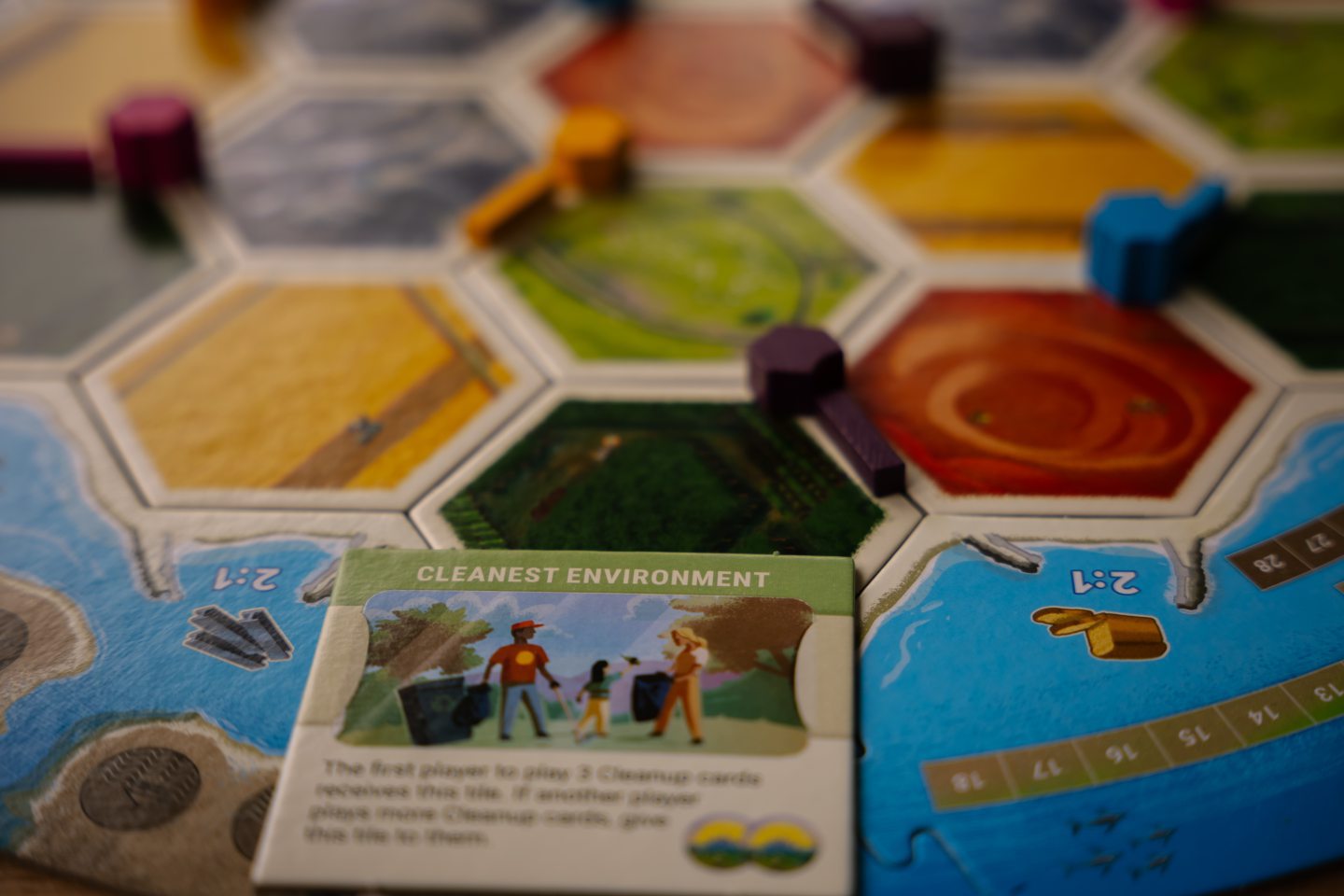
In the classic board game Catan, players are settlers racing to develop an uninhabited island. They compete to build settlements, roads and cities as quickly as possible in a universe where growth and building development are good and even necessary.
A new version of the game released this week puts players squarely in the 21st century, where that equation has become more complicated. In the world of Catan: New Energies, climate change is a known threat. Players build towns, cities and roads; trade commodities like steel and fabric; and erect power plants. The central decision facing them is whether to forge ahead with fossil fuels and urban growth, potentially precipitating disaster, or to invest in renewables, a slower and more expensive process that prolongs the game and offers other routes to victory.
“I had fascinating rounds of very, very, very competitive fossil usage, and we all just wanted to win,” says Benjamin Teuber, New Energies’ gameplay designer and son of Catan creator Klaus Teuber. Teuber says that during testing, players tended to start out aggressive: “We kind of destroyed the world every time we played.”
New Energies was the final game Teuber worked on with his father, who died last year. During development, the duo wanted to make sure the game featured both positive and negative possible outcomes. It can end prematurely, for example, if players continuously opt for resource-intensive activities, such as building cities and towns. At that point, the player with the highest ratio of renewable energy plants to fossil fuel plants wins. But the other players can try to forestall an early ending by building more renewable energy and removing fossil fuel power plants.
In a parallel with real life, New Energies often becomes an exercise in brinkmanship. No one wants to lower their chances of winning by not building, or by waiting to build more costly renewable energy rather than fossil fuels. But more fossil fuels, and more development of cities and towns, means all players are more likely to trigger events such as floods and air pollution. Those events make it harder to develop, which makes cheaper fossil fuels even more attractive. It’s a snowball effect that can quickly run out of control.
When Bloomberg Green put New Energies to the test, players were racked by indecision. Building fossil fuel plants is easy and makes the most sense as a strategy to propel a player to victory, but it feels morally wrong. In the end, everyone built at least one — though the player who won had a mix of renewable energy and fossil fuels.
Teuber says this balance was mirrored in his own experience. Gameplay eventually morphed from a race to build as much fossil fuel infrastructure as possible to a group consensus around switching to at least some renewables. “We said like, ‘Why did we do that again?’ Well, because it’s just inborn. We want to win,” he says. “It sucks because the game stopped again too early, and you know, next time maybe we should start earlier with green [energy].”
New Energies lays bare the complexity of solving climate change, says Kelli Schmitz, director of brand development for Catan Studio. “It doesn’t shame you for things that you can’t really control, which is kind of nice, but gets you thinking on a more macro level,” she says. “If I can’t control what kind of power plant gets built in the next town over, maybe I should start thinking about the systems that get it there and who you vote for, who you support, what kind of conversations you have with your family and friends.”
Playing a game can be more instructive than passive activities like listening to a lecture or seminar, says Kris De Meyer, a neuroscientist and director of the UCL Climate Action Unit. “Playing games can induce what is called experiential learning,” he says. This is particularly powerful when players have the opportunity to dissect what happened during the game.
Catan: New Energies isn’t the first climate board game. The series has included environmental elements in expansion packs including Crop Trust and Oil Springs, and other games — including CO2: Second Chance and Tipping Point — also gamify the problem of balancing growth and climate impacts. In the cooperative game Daybreak, released last year, players take on the roles of major countries or coalitions working to transition away from an economy based on fossil fuels. The goal is to get to “drawdown,” when carbon dioxide concentrations in the atmosphere start to fall.
“You only win when you collectively have decarbonized to drawdown, and also you lose altogether when one of the players is in a state of crisis that has endangered many communities,” says Daybreak co-creator Matteo Menapace. “Even though each player has a lot of individual agency and spends quite a lot of time actually dealing with their own internal problems, the reckoning is global.” The game has found relevance in the real world; Menapace and co-creator Matt Leacock are running sessions with bankers and weather forecasters in the coming weeks.
Laurie Laybourn, an associate fellow in the Environment and Society Centre at the think tank Chatham House, says playing Daybreak with climate policymakers highlights the unpredictability of climate impacts. “Games are a great way to help those people, and wider society, grapple with the challenge to their imagination of something that has never happened before,” says Laybourn, who advised Leacock and Menapace on aspects of Daybreak. “The things that could happen if we don’t deal with climate change are literally unimaginable, because we’ve not lived through them.”
Solutions can also be hard to imagine, at least as tangible options. That’s one reason Catan: New Energies isn’t called something like Catan: Climate Catastrophe. “We wanted it to be positive and forward-thinking,” says Schmitz, “leaving this room for hope.”
Recommended for you

 © Bloomberg
© Bloomberg © Bloomberg
© Bloomberg © Bloomberg
© Bloomberg